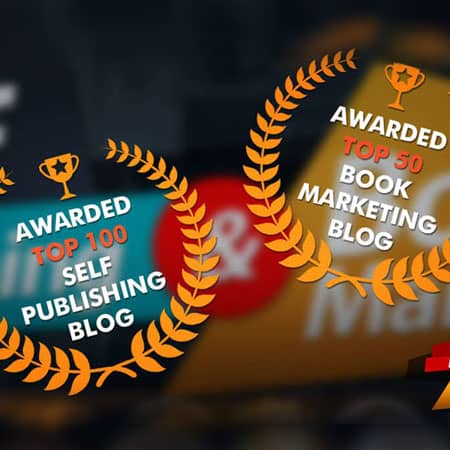
- July 8, 2021 - 
Vary Your Book Promotion for Maximum Effectiveness
A carpenter knows that the right tool applied in the proper situation gets the job done most effectively. If the only tool you have is social networking, you see that as the right one. However, there are many other book-promotional tools you can wield to create a variety of “hits” on your target buyers, from a variety of directions.
Create an assorted mix of the tools available so you use the correct combination when building a successful book-promotion campaign.
Book promotion is one of the most important functions of marketing. It makes people aware that your books exists and helps them understand why they must buy it.
Here are four general book-promotional tools you can use at different times to accomplish your goals – online and off.
1) Publicity
There are four kinds of publicity. First is paid media which includes book-promotional channels paid for by the marketer (TV, radio, print) and online and digital media (paid search ads, mobile ads). Next is owned media which are book-promotional channels that you own and control including your website and blogs. Third is earned media that you cannot control such as reviews, media appearances and articles about your book. Finally, there is shared media such as social networking, podcasts, viral channels as well as traditional word of mouth. It increases awareness and credibility through third-party testimonials.
2) Advertising
This is often a catch-all category that includes subjective tools that can reach many consumers simultaneously with the same message, with a relatively low cost per exposure. This includes paid media, email blasts, snail mail and sales literature. It can increase awareness of your content and educate people about its benefits. Consider that people do not respond to advertising. They respond to something that appeals to them and sometimes it is advertising.
3) Sales promotion
A category that includes items such as premiums, giveaways (pens, pads, coffee mugs, umbrellas, refrigerator magnets with your book’s cover on them) for generating awareness and stimulating demand. They usually have short-term impact.
4) Personal selling
Face-to-face selling may be the most persuasive selling tool. It includes in-store events, displays at craft fairs, your exhibits at trade shows as well as sales calls on non-retail buyers in corporations, associations, schools and the military.
Manipulating these four functions of book promotion is like looking into a kaleidoscope.
There are a finite number of pieces, but you can create an infinite number of combinations simply by rearranging them. With each turn of the device, you reorient the existing material and a new image (action plan) is formed.
Manipulate your book-promotion programs until you feel comfortable, and then take action.
As you proceed, new information will be added to the mix and you will need to re-evaluate your direction and progress. Each turn of your marketing kaleidoscope will give you additional actions, bringing you closer to your ultimate long-term objectives.
Your job is to determine when and how to turn the kaleidoscope.
For example, suppose you are about to conduct an in-store event or attend a craft fair (personal selling). They could be more successful if you precede the event with an awareness campaign.
This might include an enlargement of the book’s cover featured in the store (sales promotion), radio ads (paid media), announcements on your website (owned media), press releases and appearance on the air (earned media) and post cards mailed to prospective customers (advertising).
Match your book-promotional mix to your circumstances
Creating and implementing a successful promotional mix will be more likely if you match your promotional mix to:
1) Your overall marketing objectives
If your title is in its introductory stage, mass communication techniques should be emphasized. Initially, people need to understand why it is in their best interest to purchase your book. Later, they need to be reminded to buy it. The people you are trying to influence may be acquisitions people at distributors, libraries, bookstores, or the consumers themselves. If your objective is to market nonfiction to specific niches, then direct mail might lead your attack. If you plan a heavy trade-show schedule, then personal selling may prevail.
2) The personality of your authors
Authors who loathe media appearances might be better suited to a promotional mix heavy in direct mail, publicity and advertising. Others may thrive on national exposure and excel in performing on the air and in personal performances.
3) The nature of your product line
A list heavy in fiction lends itself to a mix weighted toward sales promotion, publicity and advertising where mass communication’s low cost per exposure stimulates demand most efficiently. Of course, personal selling in the form of a national media blitz is also suited to stimulating broad awareness and demand.
4) The nature of your markets
A nonfiction title destined for a tightly defined market niche dictates personal communication, perhaps implemented through a targeted campaign of direct mail, publicity and advertising.
Why go through all this?
A strategy of consistent yet varied communication reminds potential buyers that your book is available and the information in it will improve their lives in some way. It also provides these benefits:
You generate effective exposure
Simply because you promote does not mean people see it and understand what you are saying. By implementing diverse book-promotion campaigns you reach people at distinct times and in different contexts until they finally say to themselves, “Yes, I get what they are saying. This book is for me.”
You reach buyers in their comfort zones, not yours
Many of your target buyers may not interact where you promote. Not all will use a smartphone, listen to the radio, read emails or snail mail, want a refrigerator magnet with your book’s cover on it, go to trade shows or participate on social media. However, a varied communication campaign is more likely to reach them where they go for information or leisure activities.
You can sell more books
Effective, frequent and varied repetition of your message should move prospects through their mental buying process more quickly. The more people who understand the benefits of your content, the more likely a significant number of them will buy.
You may create and maintain relationships
As more prospective buyers see and hear your various messages, you will become more familiar to them, and they may begin to attribute increased credibility to your message.
Increased exposure creates synergism among all your marketing efforts
As you build more and better relationships over time your reputation will be enhanced, leading to new revenue streams as a seminar leader, speaker or consultant.
Peoples’ circumstances change
Your content that was not right for someone’s circumstances in the past may be perfect under their current conditions.
You create a promotional frame of mind
As you begin to see results from your efforts, you will feel a sense of momentum, a belief that your big break will occur soon. You never know where or when it will appear, but you know that if you persist, something will happen to jump-start your sales.
You should create additional opportunities
You never know who will receive your messages. It could be a publisher looking for the rights to a book just like yours, a meeting planner seeking a keynote speaker, the regional buyer for a national book chain, the person who arranges guests for a national talk show or a corporate buyer in need of a promotional item just like your book.
Stimulating awareness of a new fiction title from an introverted author requires a different mix of book-promotion tools than you would use for a nonfiction title written by an author who is a veteran speaker and media performer.
The more tools you have at your disposal, the more likely it is that you will have the right tool to use at the right times, and hit the nail on the head.
If you liked this article you might also like:
• Amazon Author Central – How to Setup Your Author Page on Amazon!
• The Book Marketplace Has Changed. Make Your Book Available From All the Online Retailers!
• Why First-Time Authors Need an Editor!
• Book Marketers Secrets – 7 Secrets of Top Book Marketers!
• Self-Publishing Success Stories. Secrets of Million Dollar Self-Publishers!
• Never Judge a Book By Its Cover! – Are You Really Sure?
• Business Plan for Authors. Do Authors Need a Business Plan?
• Creative Book Marketing Ideas for Selling Your Books!
Blog,

